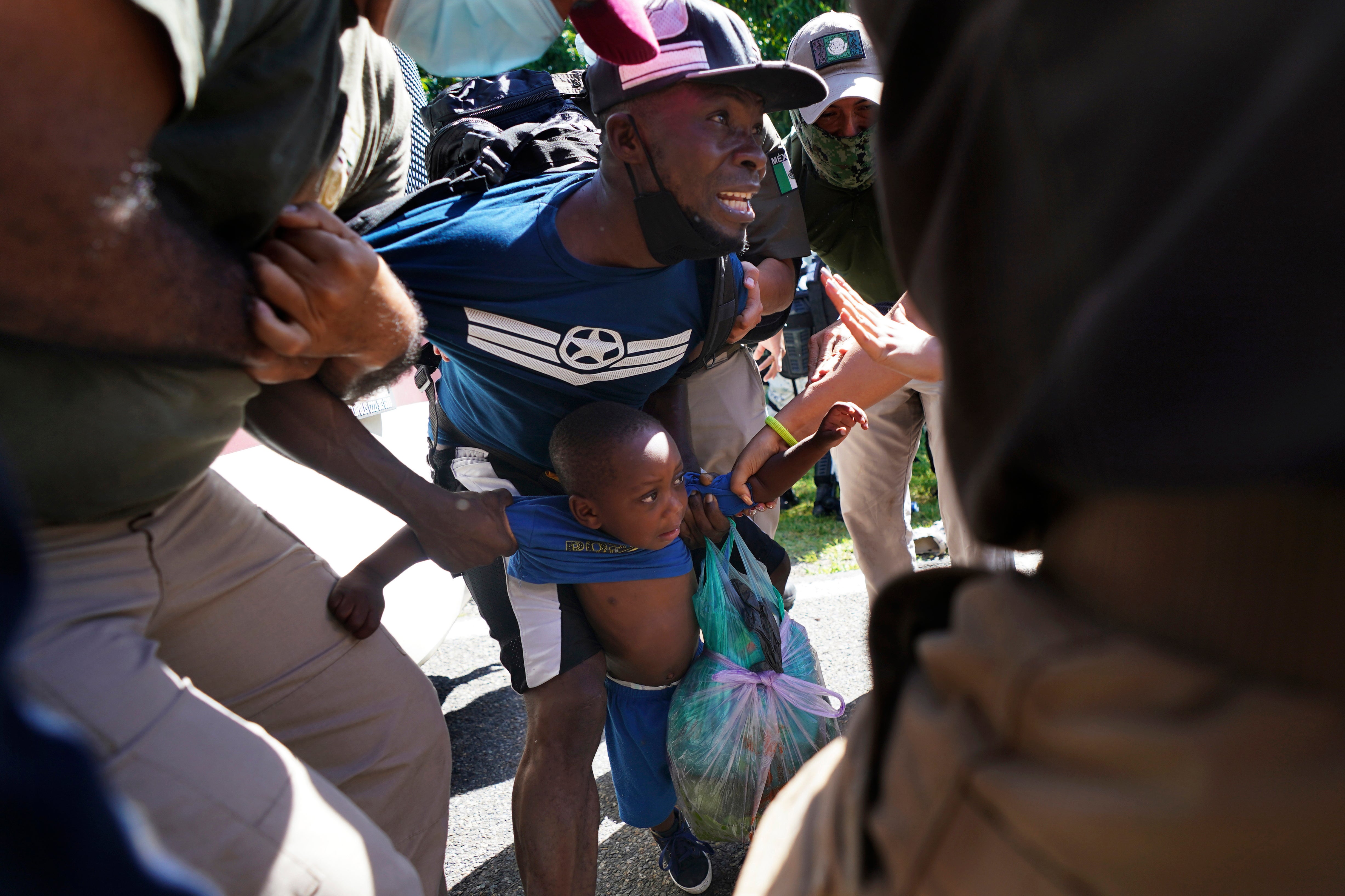EXPLAINER: Mexico confronts complex position on immigration
Mexico is facing immigration pressures from the north, south and within its own borders, putting it in an increasingly difficult position

Mexico has faced immigration pressures from the north, south and within its own borders in recent weeks, putting it in an increasingly difficult position.
Thousands of migrants continue to cross its southern border, the United States sends thousands more back from the north and there's the renewed prospect of the U.S. making asylum seekers wait in Mexico for long periods of time.
President Andrés Manuel López Obrador said Thursday the strategy of containing migrants in the south was untenable on its own and more investment is needed in the region to keep Central Americans from leaving their homes.
But the groups of migrants walking north from southern Mexico in recent days have mostly been Haitians, a group that would not be addressed by the president's proposed tree planting and youth employment programs in Central America.
MEXICO'S SOUTHERN BORDER
Protests among the thousands of mostly Haitian migrants stuck in the southern city of Tapachula have intensified in recent weeks. Many have been waiting there for months, some up to a year, for asylum requests to be processed.
Mexico’s refugee agency, which handles the applications, is overwhelmed. It was already behind and the pandemic slowed things even more. So far this year, more than 77,000 have applied for protected status in Mexico, 55,000 of those in Tapachula. Haitians account for about 19,000 of those applicants.
Tapachula’s shelters are full, leaving many asylum seekers to live in unsanitary conditions while they wait. Without the ability to work, many have few options.
Frustrated by the delay and their living conditions, some began to organize in groups of hundreds. Last Saturday, several groups began walking out of Tapachula headed north. The groups have so far been dispersed and-or detained by Mexican authorities, sometimes with excessive force.
MEXICO'S NORTHERN BORDER
Concern has been growing in northern Mexico since the U.S. Supreme Court ordered the restart of the controversial program that made asylum seekers wait in Mexico while their cases are processed. The Trump-era policy called the Migrant Protection Protocols, but better known as “Remain in Mexico,” led to more than 70,000 asylum seekers waiting, mostly in dangerous Mexican border cities.
The Biden administration ended the program earlier this year and said it would appeal the court decision even as the Department of Homeland Security takes steps to comply. On the ground, asylum seekers trying to enter the U.S. have been frozen out. Shelters in northern Mexico fear they could soon be overwhelmed again by returned asylum seekers. The Mexican government has not said how it will respond.
Meanwhile, the U.S. government continues the rapid removal of migrants under a pandemic-related authority invoked by the Trump administration. So far this year, the U.S. government has made 674,000 expulsions under that Title 42 authority.
U.S. EXPULSIONS TO SOUTHERN MEXICO
The U.S. government is also flying thousands of migrants from other countries to southern Mexico, where Mexican authorities drive them to remote locations on its border with Guatemala and drop them off. The idea is to reduce returns by making it more difficult for migrants to reach the U.S. again. Mexico is similarly moving migrants detained in the north to its southern border, said Dana Graber Ladek, Mexico chief for the International Organization for Migration, a part of the United Nations system.
Alejandra Macías, from the nongovernmental organization Asylum Access Mexico, says those are illegal transfers “because they don’t screen for people at risk.” The IOM has expressed concern about the flights as well, because people are dropped off “sometimes at night, sometimes without knowing exactly what they are doing or where they are,” said Graber Ladek.
MEXICAN GOVERNMENT ACTIONS
President López Obrador went along with the tough immigration policies of the Trump administration and has expressed willingness to continue cooperating with the Biden administration.
Defense Secretary Luis Cresencio Sandoval said last week that the main objective of the armed forces and National Guard is “to detain all migration” and “cover the northern border, the southern border with soldiers.”
But on Thursday, the president sounded frustrated with the migrant containment strategy, which lately has drawn widespread criticism. He said he would write a letter to Biden insisting the U.S. government invest in his proposed development projects to help people in Central America and southern Mexico feel less need to migrate — though so far, U.S. officials have been unenthusiastic about the specific plans.
His government has promised to issue thousands of work visas and welcome asylum seekers. But it was the military that received more budget support, while the refugee agency saw its budget reduced.
“We are overflowing with an absolutely unusual avalanche, above all of Haitians,” said Andrés Ramírez Silva, head of the Mexican Commission for Refugee Assistance.
Others say the problem goes beyond an increase in the number of asylum applicants. The Roman Catholic Church said the government “lacks a clear immigration policy and strategic planning.” It faults a mismanagement of resources, militarization of immigration policy and a lack of coordination between factions in government that push for containment and those that prioritize human rights.
POSSIBLE FIXES
To clear the backlog in Tapachula, Mexico’s refugee agency wants to offer new options to Haitians — the second largest migrant group behind Hondurans — that would allow them to travel outside the state of Chiapas and find legal work.
Ramírez Silva says these migrants don’t meet all the requirements to win asylum, but they do need protection because they can’t be returned to a country amid a political and humanitarian crisis.
He said not everyone in the Mexican government agrees with that approach, but he does have the support of United Nations agencies. Graber Ladek said they are working with the Mexican government to facilitate the granting of temporary immigration permits until officials can develop other ideas that wouldn’t be limited to one nationality.
Bookmark popover
Removed from bookmarks